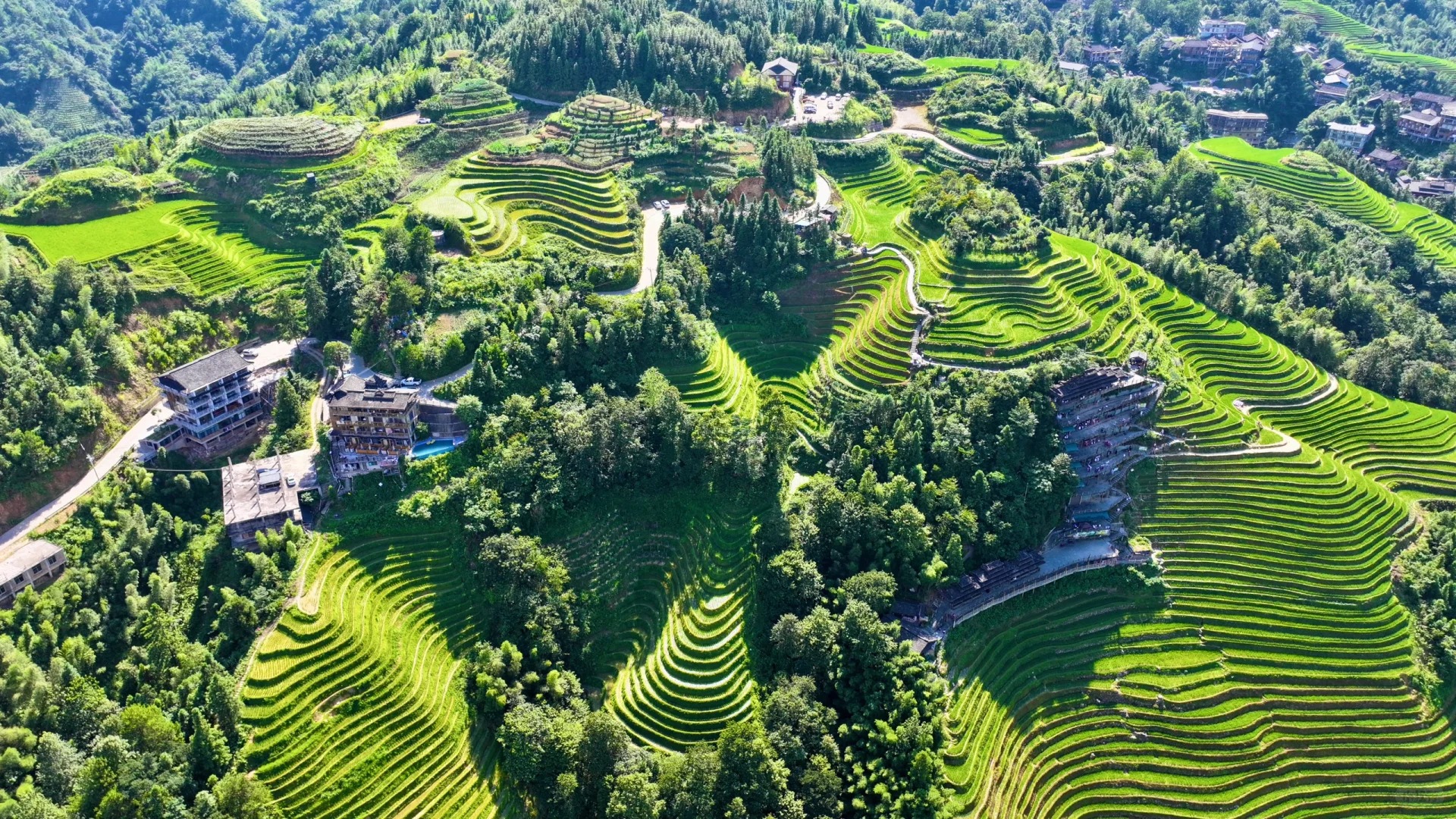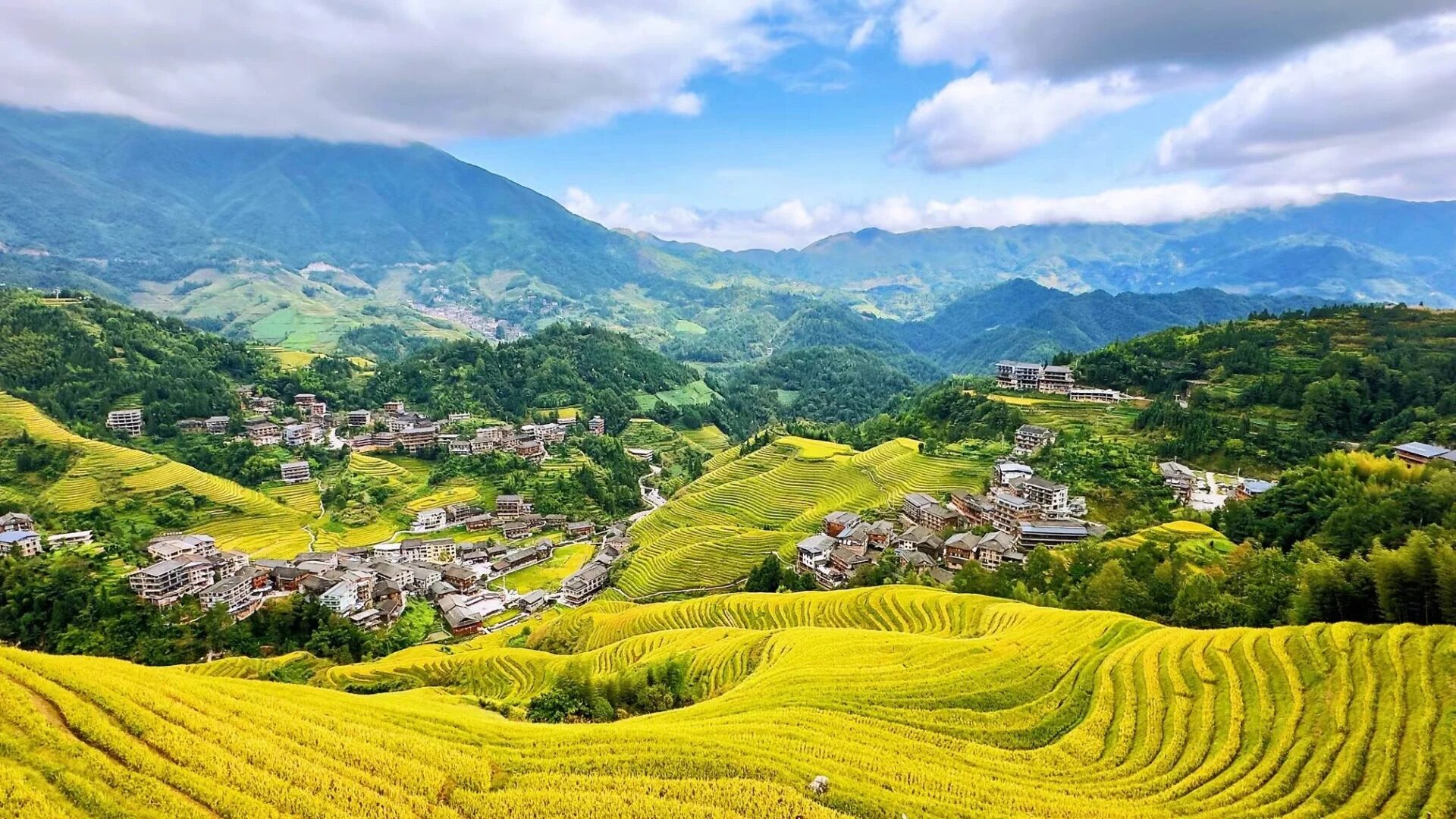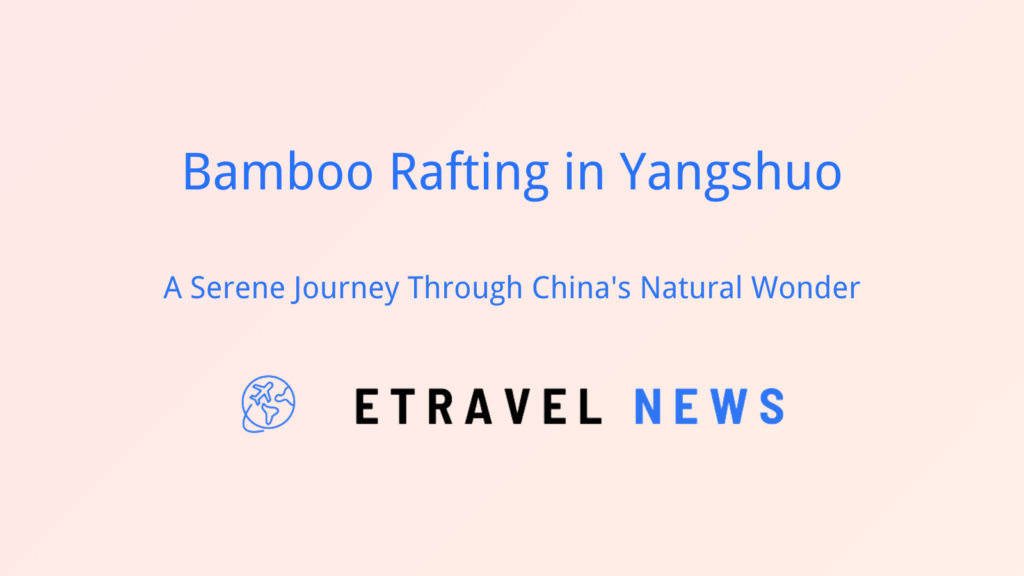Introduction to Longji Rice Terraces
Nestled in the misty mountains of Guangxi Province, China, the Longji Rice Terraces offer a breathtaking testament to human ingenuity and perseverance. Known locally as “Lóngjĭ Tītián” (龙脊梯田), which translates to “Dragon’s Backbone Rice Terraces,” these ancient agricultural marvels wind their way up the steep mountain slopes, resembling the scales of a sleeping dragon.
The terraces date back over 650 years to the Yuan Dynasty (1271-1368), with construction continuing through the early Qing Dynasty (1644-1911). This long history has imbued the landscape with both natural beauty and deep cultural significance, making it a must-visit destination for travelers seeking to experience China’s rural heritage.
Covering an area of approximately 66 square kilometers, the Longji Rice Terraces stand as a living monument to the harmonious relationship between humans and nature, showcasing how traditional agricultural practices can shape and enhance the natural environment.

Scenic Areas of Longji
The Longji Rice Terraces are primarily divided into two main scenic areas:
- Ping’an Zhuang Village Area:
- More developed for tourism
- Easier access and gentler slopes
- Home to the Zhuang ethnic minority
- Jinkeng Red Yao Village Area:
- More dramatic and steeper terraces
- Less crowded, offering a more authentic experience
- Home to the Red Yao ethnic minority

Each area boasts its own unique viewpoints:
| Viewpoint | Location | Best For |
|---|---|---|
| Nine Dragons and Five Tigers | Ping’an | Panoramic views of terraced hills |
| Seven Stars with Moon | Jinkeng | Sunrise and sunset vistas |
| Thousand-Layer to Heaven | Jinkeng | Vertigo-inducing steep terraces |
These viewpoints offer different perspectives on the terraced landscape, each providing its own breathtaking panorama that changes with the seasons and time of day.
Natural Beauty and Seasonal Changes
The Longji Rice Terraces are a year-round spectacle, with each season offering a unique visual treat:
- Spring (April-May): Water-filled terraces create a mesmerizing mirror effect, reflecting the sky and clouds.
- Summer (June-August): Lush green rice plants cover the terraces, creating a verdant sea of vegetation.
- Autumn (September-October): Golden ripe rice paints the mountains in warm hues, ready for harvest.
- Winter (November-March): Occasional snowfall transforms the terraces into a serene white landscape.
This ever-changing canvas has earned Longji the nickname “The Contour Lines of the Earth,” as the terraces seem to delineate the very shape of the mountains they adorn.

Cultural Heritage
The Longji area is home to two main ethnic minorities: the Zhuang and the Yao. These communities have been the custodians of the terraces for centuries, maintaining their unique cultures alongside their agricultural practices.
Traditional customs and festivals punctuate the year, offering visitors a glimpse into local life:
- The Zhuang’s “Singing Festival” in spring
- The Yao’s “Long Hair Festival” in summer
Local architecture is dominated by wooden stilt houses, ingeniously designed to adapt to the steep terrain. These multi-story structures serve as both homes and granaries, showcasing the practical ingenuity of the local people.
Rice cultivation methods have remained largely unchanged for centuries, with farmers using traditional tools and techniques passed down through generations. This preservation of ancient farming practices is not just about maintaining the terraces, but about keeping alive a way of life intrinsically linked to the land.

Visitor Experience and Activities
Exploring Longji offers a range of experiences for visitors:
- Hiking: Trails of varying difficulty wind through the terraces and villages. Popular routes include:
- Ping’an to Longji Ancient Zhuang Village (easy, 2 hours)
- Dazhai to Tiantou Village (moderate, 3 hours)
- Photography: The changing light and seasons provide endless opportunities for stunning shots. Dawn and dusk are particularly magical times.
- Homestays: Many local families offer accommodation, providing an immersive cultural experience.
- Local Cuisine: Try specialties like bamboo rice, oil tea, and smoked pork, each with its own unique flavor and preparation method.
Practical Travel Information
Getting there:
- Fly or take a train to Guilin
- Bus or private transfer to Longji (about 2.5 hours)
Best times to visit:
- May for water-filled terraces
- September-October for golden harvest scenes
Accommodation ranges from basic homestays to more comfortable hotels in larger villages like Ping’an.
Recommended stay: 2-3 days to fully explore the area and soak in the atmosphere.
Essential packing list:
- Comfortable hiking shoes
- Rain gear (weather can be unpredictable)
- Cash (ATMs are scarce in the area)
- Camera with wide-angle lens

Sustainable Tourism and Conservation
The preservation of the Longji Rice Terraces faces several challenges:
- Rural-urban migration threatening traditional farming practices
- Balancing tourism development with cultural and environmental preservation
Efforts are underway to address these issues:
- Promoting sustainable tourism practices
- Supporting local communities through homestay programs
- Educating visitors about the importance of preserving traditional methods
Visitors can contribute by:
- Respecting local customs and environments
- Supporting local businesses and handicrafts
- Participating in guided tours that emphasize cultural education
As we look to the future, the preservation of Longji’s natural beauty and cultural heritage will require a delicate balance between development and conservation. It’s a reminder that such unique places are not just tourist destinations, but living landscapes that depend on the continued stewardship of local communities.
The Longji Rice Terraces offer more than just stunning views; they provide a window into a way of life that has sustained communities for centuries. As you walk among the terraces, you’re not just a spectator but a participant in an ongoing story of human adaptation and harmony with nature.
Whether you’re capturing the perfect sunrise photo, sharing a meal with a local family, or simply marveling at the ingenuity of the terraced landscape, Longji invites you to slow down and appreciate the intricate balance between human culture and the natural world. It’s a place that reminds us of the profound impact we can have on our environment when we work in concert with nature rather than against it.





